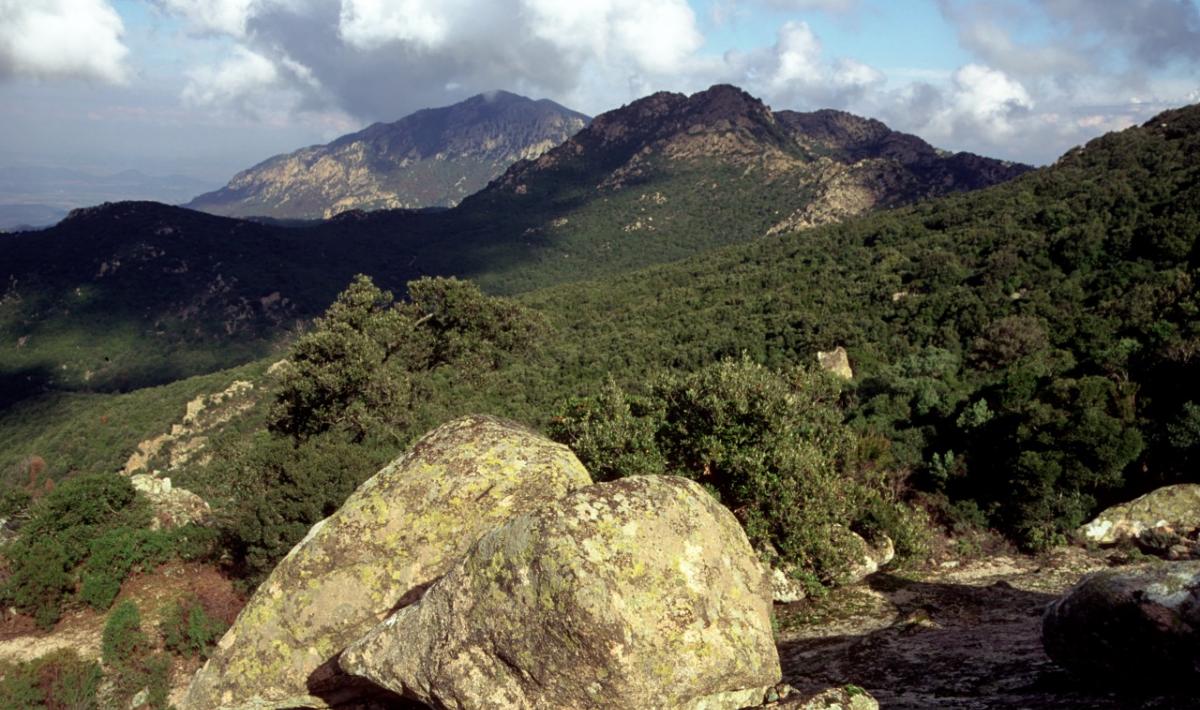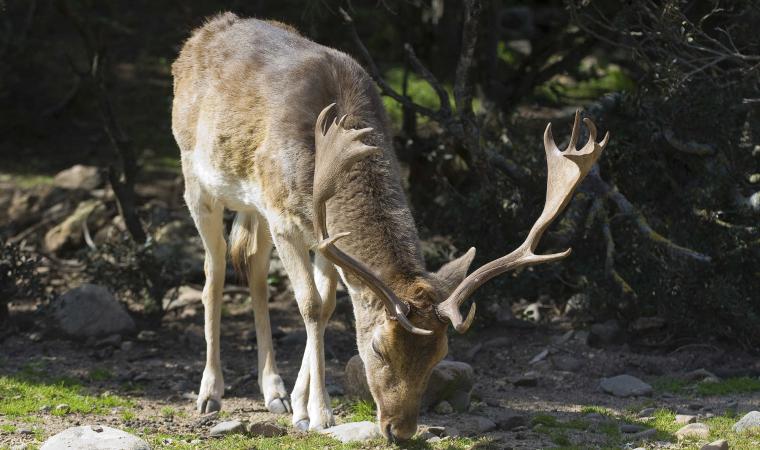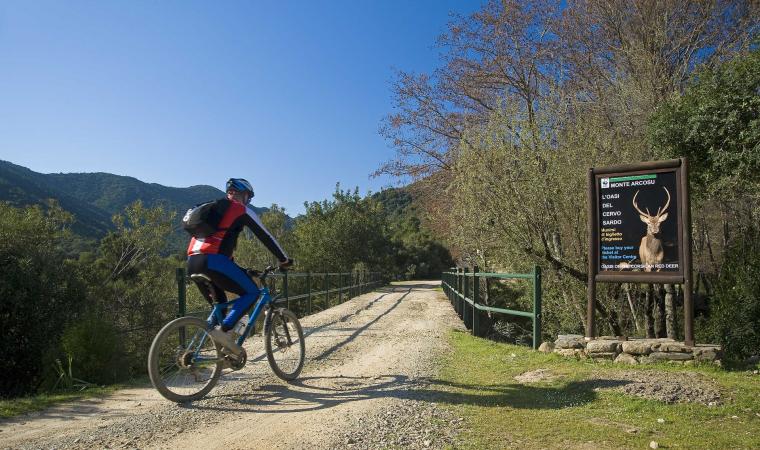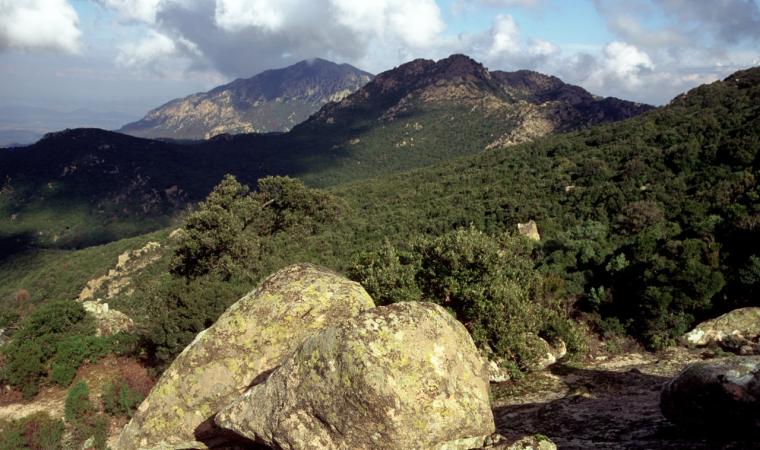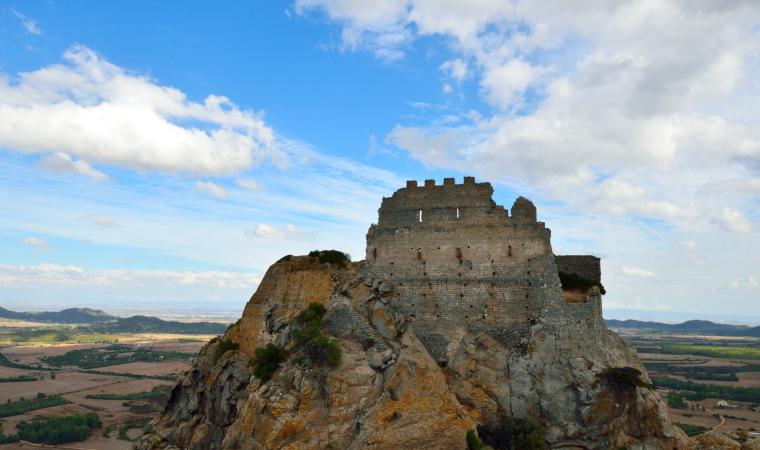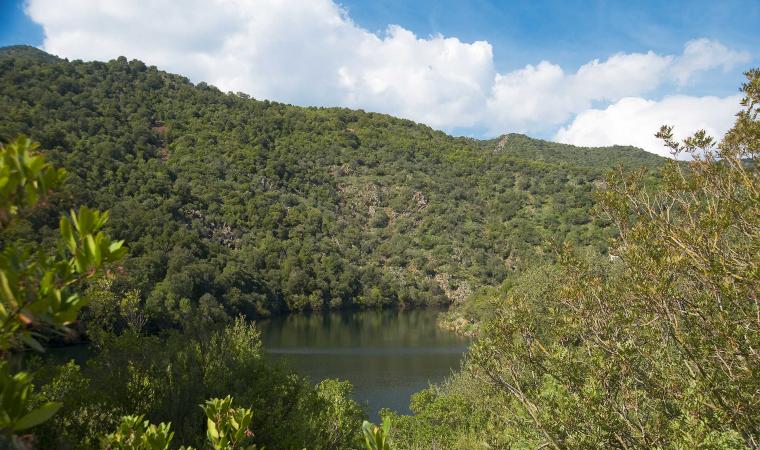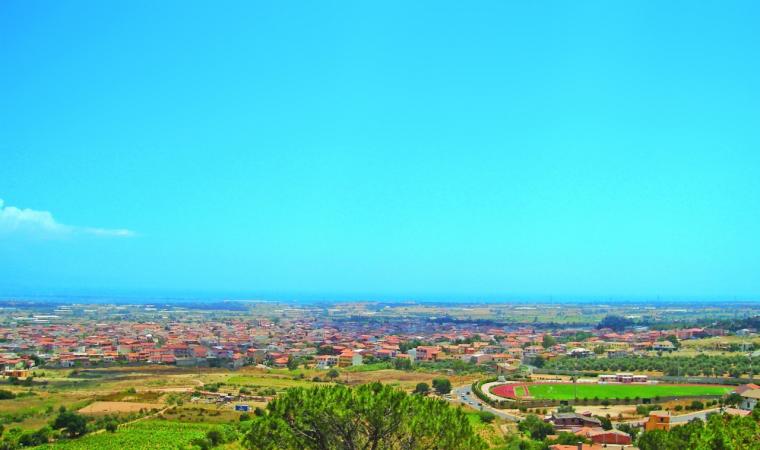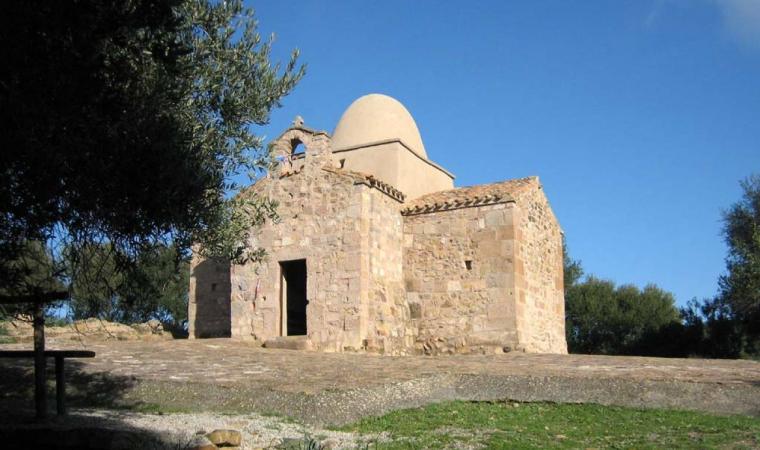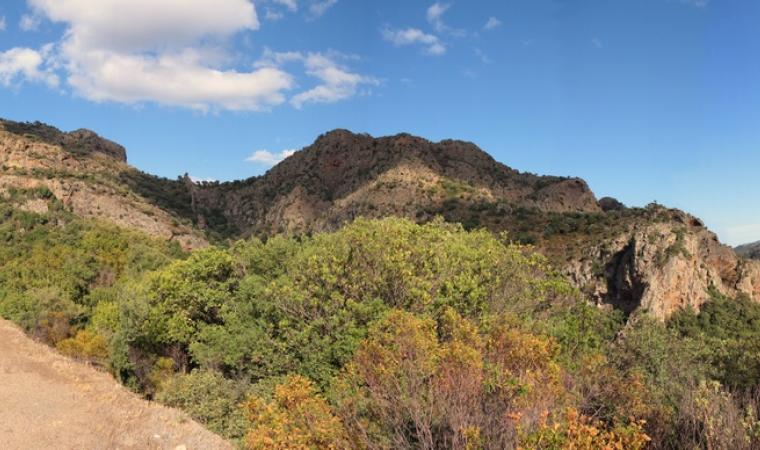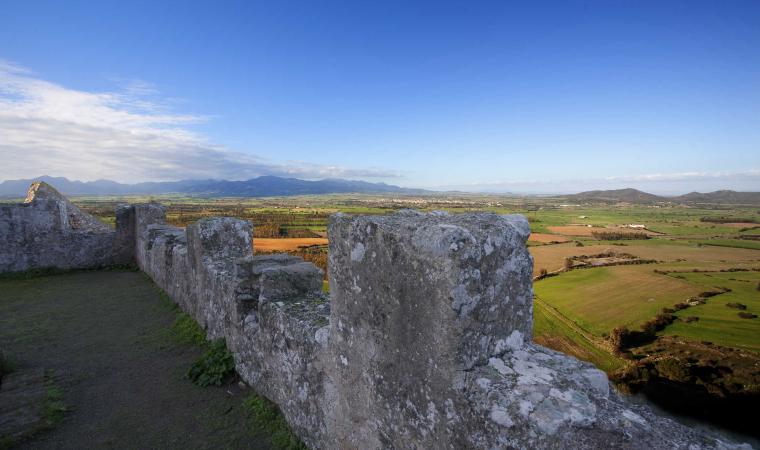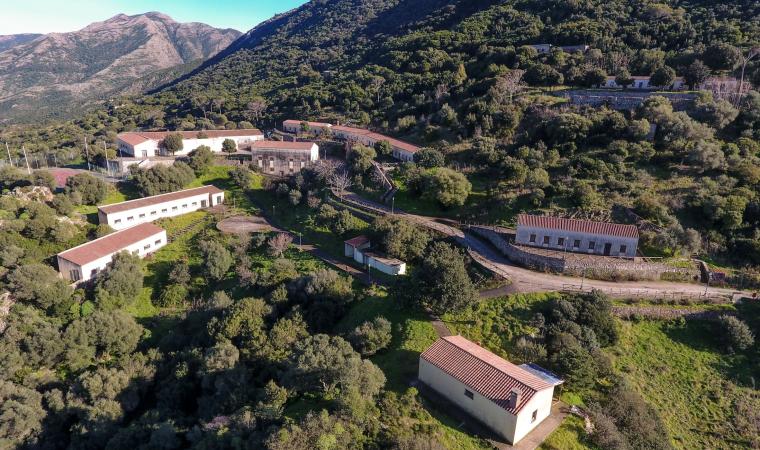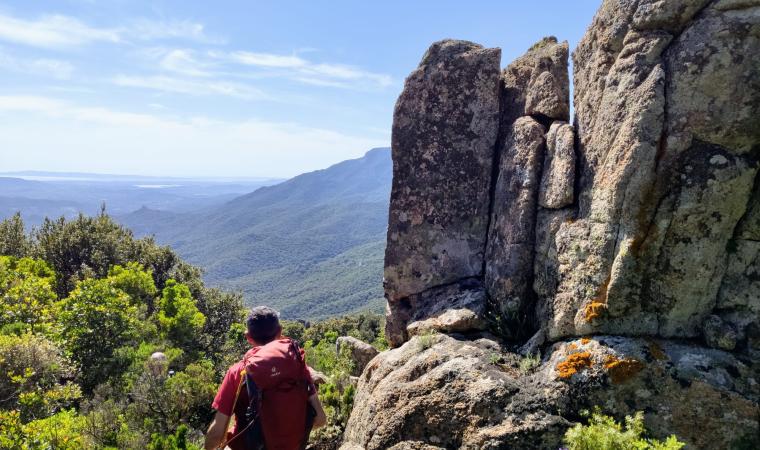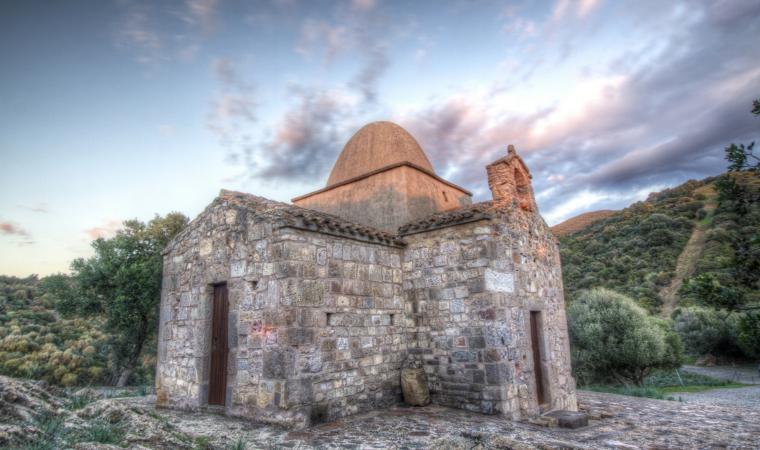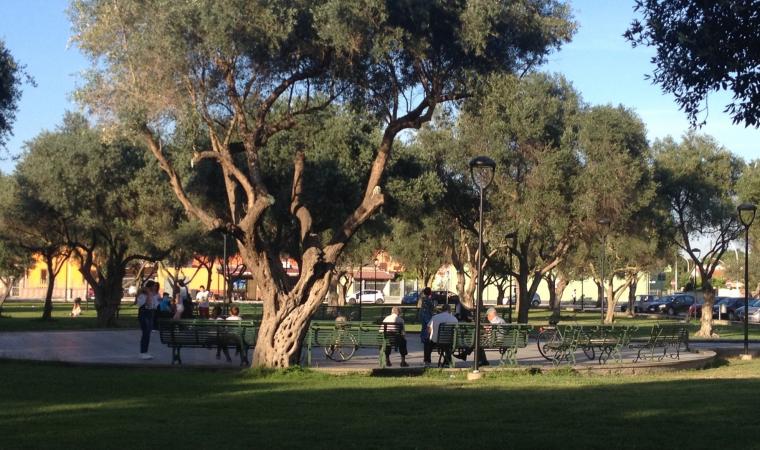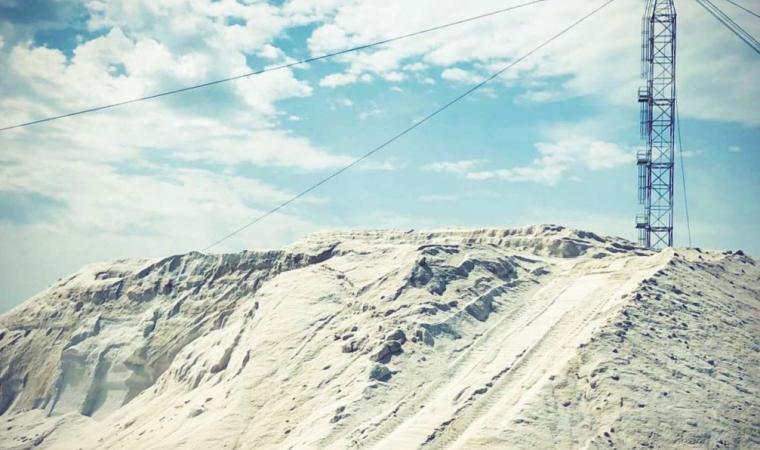Almost four thousand hectares of forest, with a heart of holm oaks and cork trees, where the Sardinian deer roams undisturbed, the symbol of the island's wildlife. The Monte Arcosu reserve is located in the larger park Gutturu Mannu (great gorge), inside an area of mountains and forests, including the territory of Assemini, Capoterra, Siliqua and Uta, a few dozen kilometres from Cagliari. For a long time, it was private game reserve, impoverished by poachers, and the area began to flourish again after the purchase and establishment by the WWF in 1985 of the largest protected area in Italy. The reserve is dominated by a mountain shaped like an arch, hence the name Arcosu, and crossed by two main valleys, which are long and narrow with steep slopes, where the Guttureddu and sa Canna rivulets flow and converge at the entrance of the reserve, forming the Santa Lucia rivulet a few kilometres further on.
The oasis is made up of two lots. The first, acquired by the WWF in 1984, mostly corresponds to the basin of the Guttureddu rivulet, the valley of which is dominated like an amphitheatre by Mount Lattias, the summit of the oasis with an altitude of 1086 metres: it will appear to you as a steep wall of granite peaks. To the southwest, the elevations reach 700-800 metres while to the southeast the reserve stretches across hills that are 300-400 metres high. From the western slope of Lattias, which is granitic and rough, the second lot begins. It is quadrilateral and includes 600 hectares adjacent to the first, acquired in 1996. It is an evocative territory due to the variety of mountain ridges: it includes the northern slope of Mount is Caravius, the highest peak in the Sulcis area (1116 metres), a ‘gentle’ elevation covered in forests. To the north of this lot, you will encounter the ‘drops’ of the su Spistiddatroxiu waterfall and to the south rounded ridges, sometimes interrupted by granite rocks.
As you move along the forest paths, you will breathe in the intense fragrance of the evergreen Mediterranean scrub: mixing with each other, are cistus, heather, mastic, myrtle, wild olive and rosemary. The medium-high altitudes are dominated by the strawberry tree, phillyrea, holm oak and cork trees. Among the arboreal species, the juniper also stands out. Along the waterways, there are oleanders, willows and black alders. There is no shortage of distinctive traits: a population of yews and one of white poplars, the remains of a primary holm oak forest and a good 46 endemic species. Completing the picture, there are cyclamens, ferns and twenty species of orchid. The dense forest-scrub is the retreat of the ‘shy’ Sardinian deer, which risked extinction during the 20th century: in 1985 only 80 of them were counted. The creation of the oasis made gradual repopulation possible. Currently, there are over one thousand Sardinian deer living in the reserve and another 1500 in the adjacent forests. The fallow deer is less fleeting than the deer and is another species that has been reintroduced. You can admire them in an enclosure along the Guttureddu rivulet: they are accustomed to visitors and approach you spontaneously. The most common mammals include the wild boar, the weasel and the fox. Among the 70 bird species, the birds of prey stand out: the peregrine falcon, the buzzard, the Eurasian sparrowhawk, the rare Sardinian goshawk and the very rare golden eagle.
‘Nature trails’ depart from the two visitor centres and they are well-marked and can be covered in hours, with some stopping places along the way. The sa Canna route is more challenging and starts from the entrance to the reserve, running along the torrent and a wood until it begins to climb the top of the hill overlooking the centre. The path that begins at the guest quarters of Perdu Melis is easier and proceeds through the wood around the Guttureddu rivulet. As well as the two paths there are also trekking trails 15-25 kilometres long (4-6 hours walking time), which together cover a network of 80 kilometres, differentiated by difficulty and duration. The most arduous and wild stretches allow you, with a little patience, to spot deer and birds of prey. There are also nighttime excursions in the summer and visits to wildlife enclosures and observation huts.
The 3600-hectares of the reserve represent about one-tenth of the 35 thousand hectares of the Gutturu Mannu park, a canyon crossed by the torrent of the same name and covered by an expanse of greenery. The Park is the home of two other sanctuaries (Pantaleo and Gutturu Mannu) and is adjacent to the area of Pixinamanna-Is Cannoneris.

